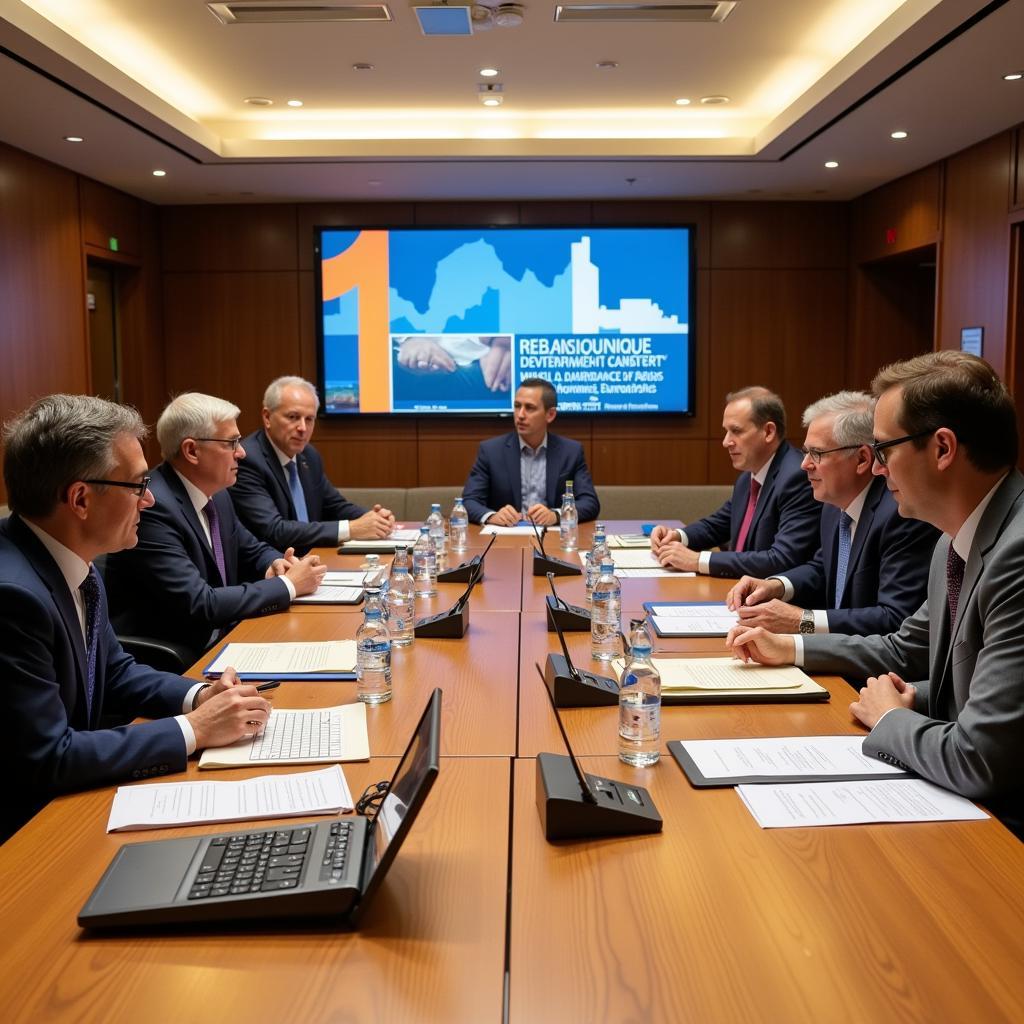Exploring the Vibrant World of African Colour Art
African Colour Art is a captivating expression of the continent’s rich cultural heritage, diverse traditions, and unique artistic vision. From the bold geometric patterns of Ndebele homesteads to the intricate mask carvings of West Africa, African colour art offers a fascinating journey into a world of symbolic meaning, vibrant aesthetics, and powerful storytelling. This art is more than just decoration; it’s a window into the soul of Africa. After reading this, check out some beautiful examples of an african earth mask.
The Significance of Colour in African Art
Colour plays a central role in African art, carrying deep symbolic meaning and reflecting the spiritual, social, and environmental contexts of various communities. Different colours often represent specific ideas or concepts, adding layers of meaning to the artwork. For example, red might symbolize power and vitality, while white can represent purity and peace. The use of colour is not merely aesthetic; it’s a language in itself, communicating complex narratives and cultural values.
Red is often associated with intense emotions, while blue can evoke a sense of tranquility. Yellow, representing the sun, frequently embodies life and energy. These symbolic associations imbue African art with a profound depth, allowing viewers to connect with the artwork on a deeper level.
Diverse Forms of African Colour Art
African colour art manifests in a multitude of forms, from traditional crafts to contemporary paintings. Textiles, pottery, sculptures, and body adornments all serve as canvases for vibrant colours and intricate patterns. The diversity of artistic expression across the continent is truly remarkable, each region and ethnic group boasting its own distinct style and techniques. Explore some beautiful African artwork australia.
Exploring Traditional African Textiles
Textiles, often adorned with elaborate patterns and vibrant dyes, hold significant cultural value in many African societies. These textiles, used in clothing, ceremonial garments, and everyday objects, reflect the unique artistic traditions and social structures of different communities. For example, Kente cloth from Ghana is renowned for its intricate geometric designs and vibrant colours, each pattern carrying its own symbolic meaning.
The Power of Masks in African Art
Masks, often used in ceremonial dances and rituals, are another powerful expression of African colour art. These masks, sculpted from wood, adorned with feathers, beads, and vibrant pigments, embody spiritual beliefs and ancestral connections. They are not merely decorative objects but rather conduits to the spiritual realm, playing a crucial role in traditional African societies.
What are the common colours used in African art?
Common colours in African art include red, black, yellow, white, blue, and green, each carrying symbolic weight.
How is colour made in traditional African art?
Traditional African artists utilize natural pigments derived from plants, minerals, and earth, crafting rich and enduring colours.
Where can I learn more about African colour art?
Numerous museums, galleries, and online resources offer valuable insights into the fascinating world of African colour art. For an example of an african elephant mask colouring picture you can enjoy, click the link.
Dr. Anika Kwame, a renowned scholar of African art, explains, “African colour art is a powerful testament to the creativity and ingenuity of African artists. It is a vibrant expression of cultural identity and a profound reflection of the human experience.”
The Influence of African Colour Art on Contemporary Art
The influence of African colour art can be seen in contemporary art across the globe. From fashion to interior design, the bold aesthetics and symbolic language of African art have inspired artists and designers worldwide. This cross-cultural exchange has fostered a deeper appreciation for African artistic traditions and contributed to the evolution of contemporary art.
Conclusion
African colour art is a vibrant tapestry of cultural expression, symbolic meaning, and artistic innovation. From traditional crafts to contemporary art forms, the use of colour in African art is a testament to the continent’s rich heritage and the enduring power of artistic creativity. Explore this captivating world of colour and discover the profound stories it tells. You can even buy some fantastic african crafts uk. Looking for something else? Try this african lady refresher.
FAQ
-
What does the colour red symbolize in African art? Often, red represents power, vitality, and sometimes, danger.
-
What are some common materials used in African colour art? Materials include natural pigments, wood, textiles, clay, and beads.
-
Where can I see examples of African colour art? Museums, galleries, and online platforms showcase diverse collections of African art.
-
How has African colour art influenced contemporary art? Its bold aesthetics and symbolic language have inspired artists and designers globally.
-
What is the significance of patterns in African art? Patterns often convey specific meanings related to social status, beliefs, or historical events.
-
What are some well-known forms of African colour art? Examples include Ndebele house painting, Kente cloth, and traditional masks.
-
How can I learn more about the meaning of colours in African art? Research specific cultures and regions to understand the nuances of colour symbolism.
Professor Chinua Achebe, a respected expert in African studies, notes, “Colour in African art is not simply decorative; it is a vital element of communication, conveying complex narratives and cultural values.”
Do you have any other questions about African art, culture, or history? We encourage you to explore our website for more insightful articles and resources.
When you need assistance, please contact us via Phone: +255768904061, Email: [email protected], or visit our address: Mbarali DC Mawindi, Kangaga, Tanzania. We have a 24/7 customer service team.


